Enrollment crisis looming over UNI
Feb 3, 2022
Editor’s Note: Glenn Gray is a tenured university administrator with 35 years of experience in higher education including 19 years of service as a chief housing officer.
Caroline Christensen’s Nov. 29 article in The Northern Iowan headlined “UNI enrollment projected to increase within 5 years,” suggests UNI may best serve students by planning now for 2026 to 2030 relative to enrollment.
Enrollment
● Past Five Years
- Fall 2017 (11,907 students) to Fall 2021 (9,231 students)
- Enrollment dropped by 2,676 students or 22.5 percent (a 53-year low)
- An average annual drop of 535 students
● Five Year Forecast
- Fall 2022 (9,231 students) to Fall 2026 (10,821 students)
- Enrollment projected to increase by 1,590 students or 17.2 percent
- An average annual increase of 318 students
● Assuming UNI can realize this ambitious forecast, enrollment will still be down 1,086 students or 9.1 percent at the end of the five-year forecast in comparison to the start of the previous five years.
- The following table depicting high school graduation rates indicates that there is a long-term enrollment crisis looming for U.S. Colleges and Universities, including UNI.
Relative to Iowa’s population, a Nov. 17 article by James Lynch published in the Des Moines Register states “The 2020 census showed Iowa’s population growing about 4.7% compared with the national rate of 8%. Iowa’s five-year population change rate is an anemic 1%. Right now, more people are leaving Iowa than coming into the state.”
Based on an analysis of past enrollment trends and future enrollment forecasting, UNI is becoming a medium size, primarily residential institution. Subsequently, UNI’s strategic and fiscal planning is best based on an FTE of up to 10,000 degree-seeking students, with at least 50% or 5,000 students attending full time, and at least 25% or 2,500 students living on campus.
Cost of Attendance
Affordability is critical to access, especially among first-generation, low-income, marginalized students. UNI is the only public comprehensive land-grant university in the state of Iowa. As a land-grant university, UNI is charged with providing education at low cost to all Iowans regardless of race or economic status. Iowa’s other two public universities, SUI and ISU, are large research I institutions with far greater financial resources to support students in general and low-income students in particular.
UNI can grow enrollment and increase student retention – retention of freshmen into their sophomore and junior years – by way of price. The total net cost and the total low-income net cost to attend UNI is higher than UNI’s competitors, including SUI and ISU.
Expenditure per FTE
UNI is designed, financed, and staffed to serve 13,000 students. Fall 2022 enrollment is projected to be 9,231 students, or 3,769 students (29 percent) below UNI’s capacity.
Assuming UNI will become an institution serving up to 10,000 students, it is imperative that UNI lower its expenditure per FTE. To accomplish this, it is of paramount importance that UNI Senior Leadership make innovative, difficult, and at times what will be unpopular decisions.
The following considerations will reduce UNI’s expenditure per FTE.
- Right-size UNI’s campus footprint which is designed, financed, and staffed to serve 3,000 more students than will be served going forward. (i.e., relocate/eliminate/selloff everything south of University Avenue). The utilities and maintenance savings alone will help lower the price of attendance.
- Outsource costly auxiliary services – services the Cedar Valley community will welcome providing UNI (i.e., auto pool, refuse removal, bookstore, catering and retail services, public safety). If done right, outsourcing will increase revenues.
- Convert UNI’s Division I athletics program to Division II, or maintain the Division I athletics program but eliminate the costly football program. Doing so will reduce student fees.
- Create a workplace culture that stops the costly and counterproductive turnover of faculty and staff (e.g., there have been four enrollment executives and four student affairs executives at UNI over the past 8 years).
Realistic, accurate, and data-informed enrollment planning, lowering UNI’s net cost of attendance, reducing UNI’s expenditure per FTE, and deploying innovative and effective recruiting and retention strategies will help reverse UNI’s five-year decline in enrollment, better serve students, and contribute to long-term success for UNI.



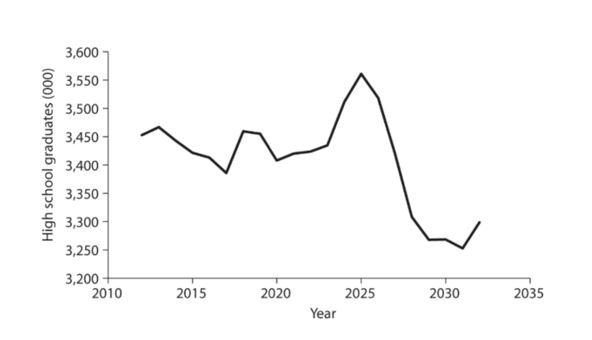
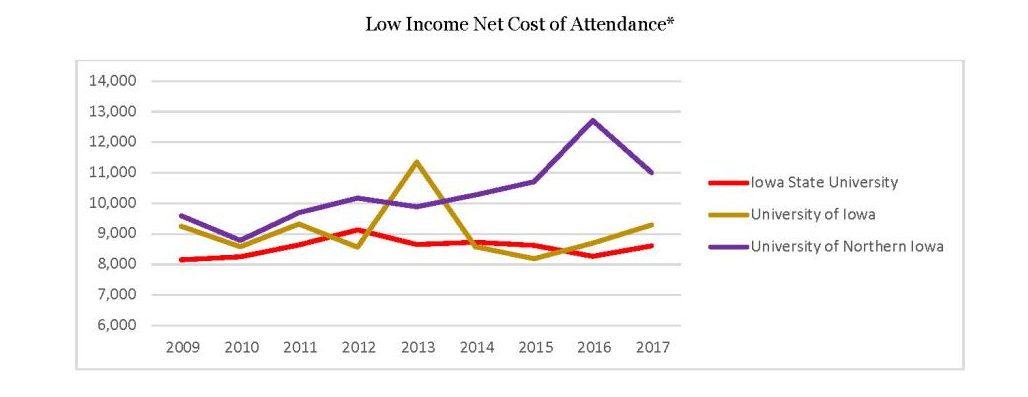

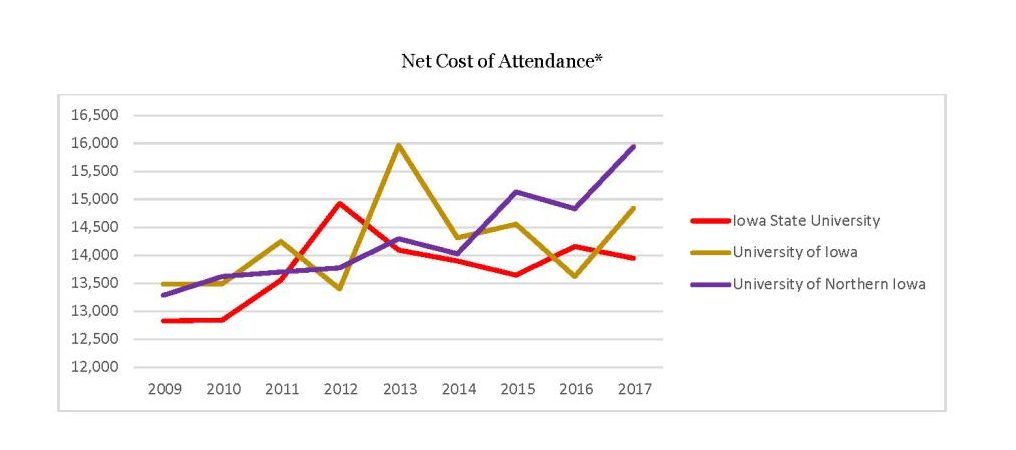
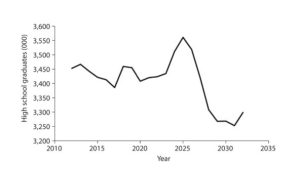
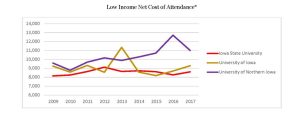

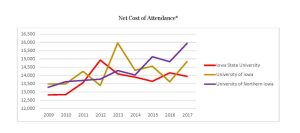







Brad • Feb 4, 2022 at 1:22 pm
Moving all athletics to Division II is a horrible idea. How come whenever the idea of “cutting student fees” is brought up it is always tied to athletics? Why don’t we ever talk about cutting things like the performing arts/GBPAC? Personally, I don’t think either athletics or the arts should be touched.
Andrew Thompson • Sep 4, 2022 at 5:19 pm
Brad, The problem is Athletics sucks any where between $4.5 to 5.5 million out of the general education fund every year. Over 3 decades that amounts to $150 million (not including interest) for an endowment that could pay for scholarships, new faculty positions, or library/research grants. A university’s main mission, is education and research, not athletics. If the athletic’s department was self sustaining, we would have nothing to talk about —-but it isn’t and never has been. In addition, not only does the athletic department take away money earmarked for general education, but thanks to the UNI foundation, it siphons off money that could go towards education in favor of athletics. If UNI can’t get its enrollment back above 10K, there will be voices around the state to shut it down and let students migrate to U if I or ISU to cut costs. Over the last 15 years, due in part to initiatives at the university president’s office, much of UNI’s distinctive qualities have been removed in order to become more like U if I and ISU.
Glenn • Oct 26, 2022 at 3:15 pm
Brad, you’re spot on!!
Glenn
Glenn Gray • Oct 26, 2022 at 3:35 pm
COMMENT CORRECTION: “Andrew” NOT “Brad”
Andrew, you’re spot on!!
Glenn